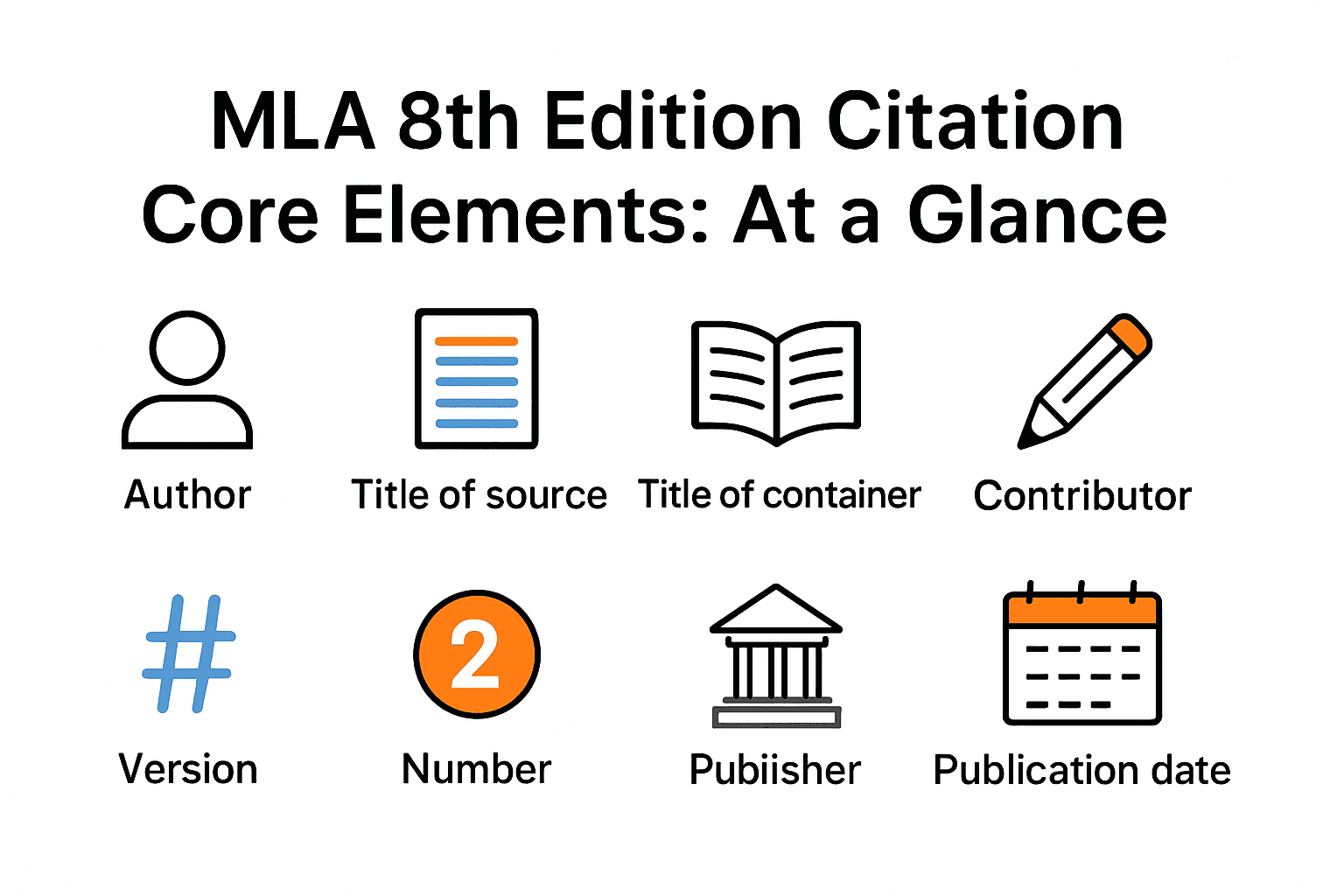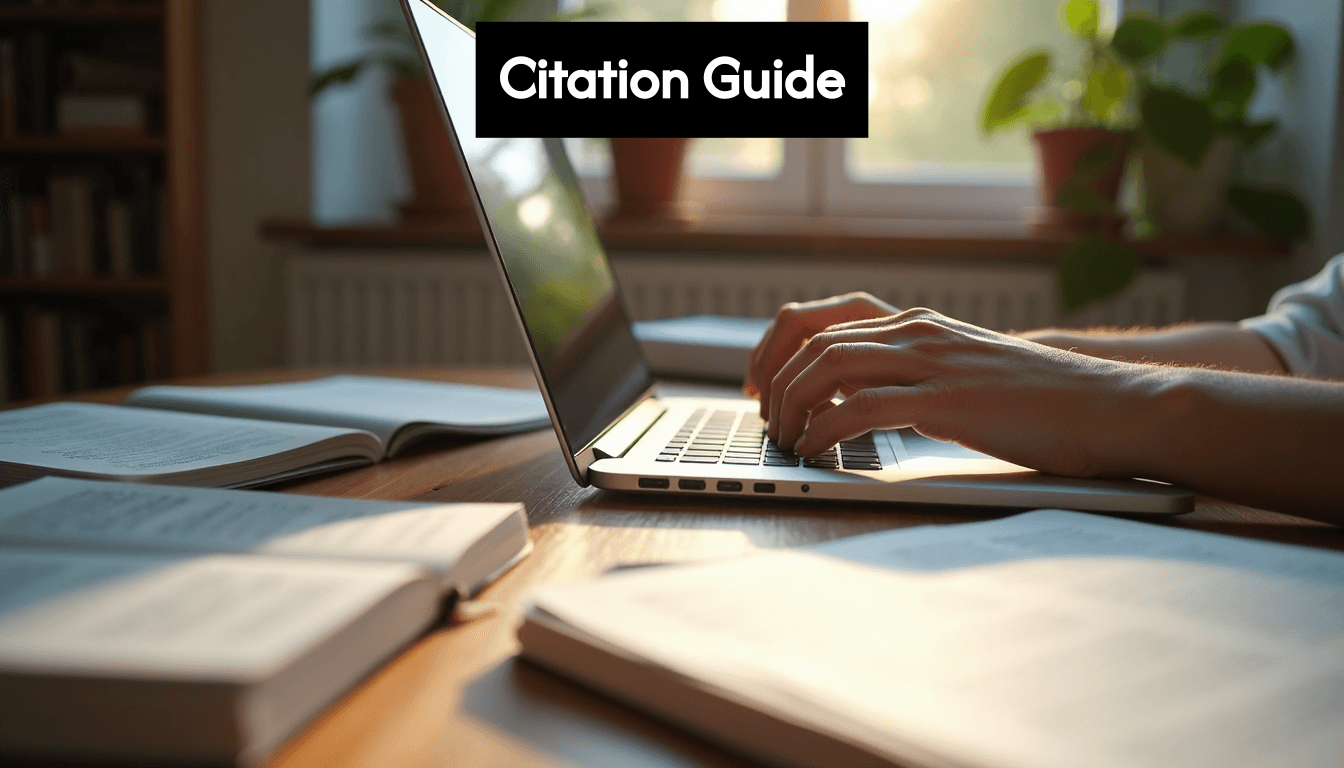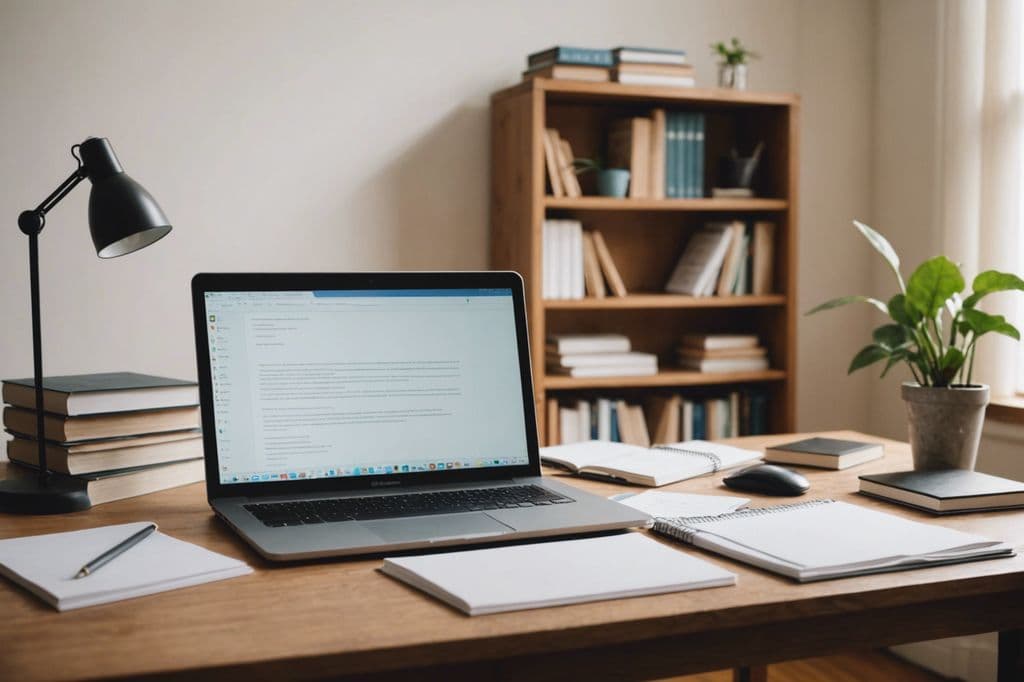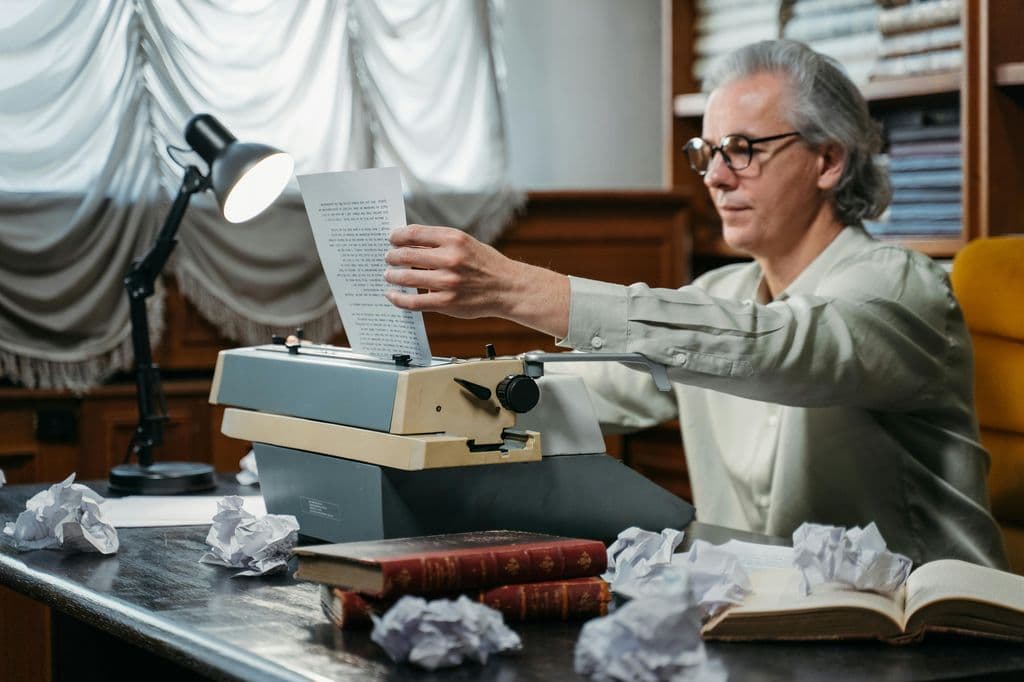Blog
Learning Materials
MLA 8th Edition Citation Format: A Clear Guide for 2025
Updated: June 23, 2025

MLA got a major facelift in its 8th Edition—and the changes are more than just cosmetic. The new system replaced dozens of confusing citation rules with a single list of eight core elements, making MLA 8th Edition the first to offer a universal citation framework for any source type. Sounds simple until you realize the entire notion of publication details like city and medium just vanished. Yet, the real revolution lies in this concept of "containers," a tool so flexible it lets you cite anything from a classic novel to a streaming video with the same set of rules. This shift means old excuses about citation confusion no longer hold up.
Table of Contents
- Standardized Citation Core Elements
- Elimination Of Unnecessary Publication Details
- Introducing The Container Concept
- Print And Digital Book Citations
- Academic And Online Article Citations
- Multimedia And Complex Source Citations
- Precision In Author Identification
- Source Container And Contextual Information
- Digital Source And Emerging Media Citations
Quick Summary
| Takeaway | Explanation |
|---|---|
| Standardized Citation Core Elements | MLA 8th Edition introduces a universal framework for citing all source types, simplifying the citation process with consistent core elements like Author, Title, Container, and more. |
| Elimination of Unnecessary Publication Details | The new format removes mandatory details such as publication medium and city, focusing instead on essential information to accommodate digital sources. |
| Container Concept | By identifying the 'container' where a source resides, researchers can provide comprehensive context for a source’s origin, improving source traceability and accessibility. |
| Handling Complex Sources | The format allows flexibility in citing unconventional sources, emphasizing the importance of capturing relevant author and publication information for accurate documentation. |
| Common Mistakes to Avoid | It's crucial to maintain precision in author identification, include container information, and ensure the correct representation of digital sources to achieve scholarly rigor. |
Key Changes in MLA 8th Edition Format
The MLA 8th Edition represents a significant evolution in academic citation standards, introducing streamlined approaches that reflect the complexity of modern information sources. Understanding these transformative changes is crucial for students and researchers navigating contemporary academic writing.
Standardized Citation Core Elements
MLA 8th Edition fundamentally reimagined citation methodology by establishing a universal framework applicable across all source types. According to MLA Style Center, the new format prioritizes a consistent set of core elements that can be assembled uniformly regardless of source medium. This approach simplifies the citation process while maintaining academic rigor.

The core elements now include:
- Author: Primary creator of the work
- Title: Name of the source
- Container: Larger work housing the source
- Other Contributors: Additional individuals involved
- Version: Specific iteration or edition
- Number: Volume or issue details
- Publisher: Organization responsible for distribution
- Publication Date: When the work was released
This standardized approach eliminates previous complex rules that varied by source type, creating a more intuitive and flexible citation system. Researchers can now apply the same fundamental principles whether citing a book, website, academic journal, or multimedia resource.
Elimination of Unnecessary Publication Details
Perhaps the most significant transformation in MLA 8th Edition was the removal of previously mandatory publication information. According to Dickinson College Libraries, writers no longer need to include the medium of publication (such as "Print" or "Web") or specify the city of publication.
This change acknowledges the increasingly digital nature of academic research and reduces unnecessary complexity. By focusing on essential information like author, title, and publication details, MLA 8th Edition creates a more adaptable citation format that can accommodate emerging digital and multimedia sources.
Introducing the Container Concept
One of the most innovative aspects of MLA 8th Edition is the introduction of the "container" concept. This approach recognizes that many sources exist within larger systems or platforms. For instance, an academic article might be housed within an online database, or a video might be part of a streaming platform.
By identifying and citing the container, researchers provide more comprehensive context about a source's origin and accessibility. This method ensures that readers can effectively trace and verify the original source, regardless of its complex digital or print ecosystem.
Additionally, learn more about precise in-text citation techniques to complement these structural changes and ensure accurate academic documentation.
These transformative changes in MLA 8th Edition reflect a forward thinking approach to academic citation. By creating a more flexible, intuitive system, MLA has empowered researchers to document diverse sources efficiently while maintaining scholarly integrity.
Step-by-Step MLA Citation Guide With Examples
Mastering the MLA citation format requires understanding a systematic approach to documenting sources. This comprehensive guide will walk you through the essential steps of creating accurate citations that meet the MLA 8th Edition standards.
Identifying Core Elements for Citation
Before creating a citation, you must gather the core elements for your source. According to Purdue Online Writing Lab, the standard order of citation elements includes:
- Author: The primary creator of the work
- Title of Source: The name of the specific work
- Title of Container: The larger work that holds the source
- Other Contributors: Additional people involved in creating the work
- Version: Specific edition or iteration
- Number: Volume or issue details
- Publisher: Organization responsible for distribution
- Publication Date: When the work was released
- Location: Page numbers or URL
For example, a book citation would typically follow this format: Author's Last Name, First Name. Title of Book. Publisher, Publication Date.
Creating Works Cited Entries
When building your Works Cited page, precision is key. Dickinson College Libraries emphasizes the importance of consistent formatting. Here are detailed examples for different source types:
Book Citation Bhabha, Homi K. The Location of Culture. Routledge, 1994.
Website Citation LastName, First Name. "Article Title." Website Name, Publication Date, URL.
Journal Article LastName, First Name. "Article Title." Journal Name, vol. X, no. Y, Publication Date, pp. XX-XX.
Handling Complex Sources
Modern research often involves sources that don't fit traditional categories. The MLA 8th Edition provides flexibility for digital and multimedia sources. discover advanced citation techniques for complex sources to ensure comprehensive documentation.

For streaming content or online platforms, include the container information. An example might look like:
Director's Last Name, First Name. "Video Title." Platform Name, Upload Date, URL.
Key considerations for complex sources include:
- Identifying the most relevant author or creator
- Determining the primary container
- Including all necessary publication information
- Ensuring readers can locate the original source
While the process might seem intricate, MLA 8th Edition ultimately simplifies citation by creating a universal framework that works across virtually all source types. The goal is clear communication and proper academic attribution.
Remember that consistency is more important than perfection. By following these guidelines and paying attention to details, you'll create professional, accurate citations that meet rigorous academic standards.
Citing Different Source Types in MLA 8th Edition
Navigating the diverse landscape of academic sources requires a flexible yet precise citation approach. The MLA 8th Edition provides a universal framework that can accommodate virtually any type of source, from traditional print materials to emerging digital platforms.
Print and Digital Book Citations
Book citations represent one of the most fundamental citation types. According to Purdue Online Writing Lab, the core elements remain consistent across print and digital formats.
Print Book Citation LastName, FirstName. Title of Book. Publisher, Publication Year. Example: Smith, John. Digital Research Methods. Academic Press, 2022.
E-Book Citation LastName, FirstName. Title of Book. Publisher, Publication Year. Platform or Website, URL. Example: Johnson, Emily. Modern Academic Writing. Oxford University Press, 2021. Google Books, books.google.com/example.
Academic and Online Article Citations
Research articles require nuanced citation approaches that capture their unique publication characteristics. Research from Columbia College Libraries highlights the importance of capturing both container and source details.
Academic Journal Article LastName, FirstName. "Article Title." Journal Name, vol. X, no. Y, Publication Date, pp. XX-XX. Example: Rodriguez, Maria. "Digital Transformation in Academia." Journal of Educational Technology, vol. 45, no. 3, Sept. 2022, pp. 112-129.
Online Article Citation LastName, FirstName. "Article Title." Website Name, Publication Date, URL. Example: Chen, David. "Future of Academic Research." Medium, 15 Jan. 2023, medium.com/academic-insights/research-trends.
Multimedia and Complex Source Citations
Modern academic work increasingly involves multimedia sources that challenge traditional citation formats. explore advanced citation techniques for digital sources to ensure comprehensive documentation.
Podcast Citation LastName, FirstName, host. "Episode Title." Podcast Name, Season X, Episode Y, Production Company, Publication Date. Example: Williams, Sarah, host. "Research Innovations." Academic Insights Podcast, season 3, episode 12, University Press Network, 22 Mar. 2023.
YouTube Video Citation LastName, FirstName. "Video Title." YouTube, Channel Name, Upload Date, URL. Example: Garcia, Roberto. "Machine Learning Fundamentals." YouTube, Tech Explained Channel, 5 Feb. 2023, youtube.com/watch?v=example.
Key principles to remember when citing different sources:
- Always prioritize the core elements
- Include all available information
- Be consistent in formatting
- Ensure the citation helps readers locate the original source
The MLA 8th Edition's flexible framework empowers researchers to document diverse sources accurately. By understanding these citation principles, you can create professional, comprehensive references that meet rigorous academic standards.
Essential Tips and Common Mistakes to Avoid
Mastering MLA 8th Edition citation format requires more than understanding the basic rules. Academic success depends on avoiding common pitfalls and implementing strategic citation practices that ensure precision and clarity.
Precision in Author Identification
Author attribution is a critical component of accurate citations. According to Purdue Online Writing Lab, researchers must follow specific guidelines when listing authors.
Key Author Citation Rules:
- List the first author's last name first, followed by first name
- Subsequent authors use first name, then last name
- For multiple authors, use "and" before the final author's name
- Include all authors for works with fewer than three authors
- For works with three or more authors, list the first author followed by "et al."
Common mistakes include incorrectly ordering names or omitting crucial author information. Always verify the complete author details before finalizing your citation.
Source Container and Contextual Information
The MLA 8th Edition introduced the concept of "containers" to provide comprehensive source context. Columbia College Libraries emphasizes the importance of capturing the broader publication environment.
Potential Container Elements:
- Website name
- Journal title
- Streaming platform
- Database name
- Academic repository
Researchers frequently overlook container details, which can make source verification challenging. Always include the most relevant container information to help readers trace your sources.
Digital Source and Emerging Media Citations
Modern research involves increasingly complex digital sources. explore advanced citation strategies for digital content to ensure comprehensive and accurate documentation.
Frequent Digital Citation Errors:
- Forgetting to include URL or access date
- Misidentifying the primary creator
- Omitting version or platform information
- Using outdated citation templates
Key recommendations for digital source citations:
- Always include the most recent publication date
- Capture the specific version or iteration
- Include direct URLs for online sources
- Verify the credibility of digital platforms
Additional Essential Tips:
- Maintain consistent formatting throughout your document
- Double-check citation details against original sources
- Use citation management tools for accuracy
- Stay updated on the latest MLA guidelines
Remember that citation is not just a technical requirement but a scholarly practice of intellectual honesty. By paying attention to details and understanding the principles behind MLA 8th Edition, you demonstrate academic rigor and respect for intellectual contributions.
Mastering these nuanced citation techniques transforms citation from a mundane task to a sophisticated academic skill. Approach each citation as an opportunity to showcase your research precision and commitment to scholarly excellence.
Frequently Asked Questions
What are the core elements of MLA 8th Edition citation format?
The core elements of MLA 8th Edition include Author, Title of Source, Title of Container, Other Contributors, Version, Number, Publisher, Publication Date, and Location. This standardized framework simplifies the citation process for various types of sources.
How do I create a Works Cited entry in MLA 8th Edition?
To create a Works Cited entry, organize the core elements in the following format: Author's Last Name, First Name. Title of Source. Publisher, Publication Date. Ensure that you adhere to consistent formatting throughout your citations.
What is the 'container' concept in MLA 8th Edition citations?
The 'container' concept refers to the larger work in which a source resides. For example, an article may be part of a journal, or a video may be featured on a streaming platform. Identifying the container provides comprehensive context about the source's origin.
Are there any specific rules for citing digital sources in MLA 8th Edition?
Yes, when citing digital sources, it’s important to include the URL and any relevant publication dates. Also, make sure to identify the primary creator accurately and include container details to help readers locate the original source.
Ready to Master MLA 8th Edition Without the Stress?
Citing sources in the new MLA 8th Edition format can feel overwhelming. The article highlighted how confusing containers, missing publication details, and precise author identification can halt your progress and damage your academic confidence. If you have ever spent hours double-checking citations or worried about unintentional plagiarism, you are not alone. Academic writing should be rewarding, not stressful.

Experience a smarter, faster way to cite and write with Samwell.ai. Our advanced AI understands the latest MLA guidelines including container concepts and evolving source types. Instantly generate and polish citations, enjoy guided essay outlines, and ensure your work is 100% original and properly formatted. Join over a million students and academics already saving time and achieving peace of mind. Don’t let citation worries slow you down. Try Samwell.ai now and unlock your potential today.
Recommended Articles
- MLA 8 In Text Citation Guide for 2025: Clear Examples
- Your Definitive 2025 Guide to MLA Citation Meaning
Generate essays with Samwell.ai
Whether you’re a publisher, professor, journalist, or student, let us tailor a plan just for you.Most Read Articles

Your Guide to Help Writing a Essay Successfully
Expert tips for help writing a essay - from crafting a thesis to structuring your essay effectively.

How to Write Critical Thinking Essay: Expert Tips
Expert tips for writing a critical thinking essay. Learn how to structure, choose topics, and use evidence effectively.'

How to Write a Good Hook: A Step-by-Step Guide
Master the art of crafting a good hook with our guide. Create compelling openers for a memorable first impression.
